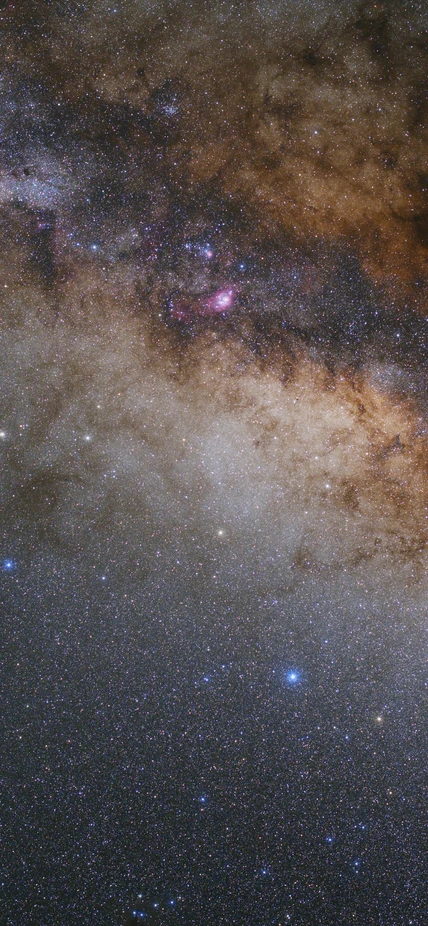Washington, DC—NASA should incorporate astrobiology into all stages of future exploratory missions, according to a new report from the National Academies of Sciences, Engineering, and Medicine presented Wednesday by the chair of the study, University of Toronto’s Barbara Sherwood Lollar, and by Carnegie’s Alan Boss, one of the report’s 17 expert authors.
Astrobiology addresses the factors that allowed life to originate and develop in the universe and investigates whether life exists on planets other than Earth. This highly interdisciplinary and constantly adapting field incorporates expertise in biology, chemistry, geology, planetary science, and physics. According to the report’s authors, recent scientific advances make this an opportune time to strengthen astrobiology’s role in NASA missions.
For example, based on the more than 2,300 exoplanets confirmed by NASA’s Kepler Mission, estimates indicate that six out of every 10 stars is orbited by an Earth-like planet, Boss explained at the NASEM’s briefing.
“That’s an absolutely stunning statistic,” he remarked. “Twenty years or so ago when we started working on planning missions like this, we thought maybe one out of 100 stars would have something like maybe a Jupiter much less an Earth.”
The report’s authors asserted that in order to fundamentally advance the search for life in the universe, research must include both a broader range of planetary habitats and consideration of more chemical indicators, called biosignatures, which could point to the presence of life.
An updated, more-sophisticated catalog and framework of biosignatures will be crucial to enhancing our ability to detect life elsewhere—which might resemble what we see on Earth or might be entirely different from life as we know it, the authors said. To find the latter, we need to investigate what are called “agnostic” biosignatures, meaning that they are not tied to the molecular blueprint of any known metabolic processes or other familiar biochemical characteristics of life.
The authors noted that NASA should especially focus on research and exploration of possible life below a planet’s surface. This is in light of recent revelations of the breadth and diversity of life in Earth’s depths, the nature of fluids beneath the Martian surface, and the likelihood of life-sustaining geological processes occurring in planets and moons with subsurface oceans.
"There’s a wide variety of different techniques for understanding the subsurface and understanding subsurface processes," Sherwood Lollar said at the briefing. "Some of them, of course, geophysical. Probes such as the InSight probe are going to bring us back important information about the Mars subsurface, orbital approaches, as well, ground-penetrating radar was critical in our understanding in the finding this summer of subsurface water on Mars. So subsurface investigation is not exclusively dependent on drilling. There are all kinds of geophysical and seismic approaches, which give us important information.”
The authors also emphasized that NASA should ramp up its efforts to develop mission-ready life-detection technology. The specialized measurements, equipment, and analysis required to take full advantage of space missions must include some tools that exist outside of traditional space science fields, the authors say.
To date, NASA missions with a focus on astrobiology have been largely defined by geological perspectives, according to the report. The authors recommended integrating astrobiology into every stage of a mission, from inception to development to operations.
At the briefing, Boss particularly noted the importance of understanding planetary system demographics.
“You can’t just study the planets, you have to also understand the star,” he said, adding that “if you want to understand whether or not a planet is habitable, it’s useful to know what else is in the system.”
The authors also pointed out that adopting an interdisciplinary approach to astrobiology would produce a more complete picture of life on Earth, as well as on other planets. Integrating the physical, chemical, biological, geologic, planetary, and astrophysical sciences into the study of astrobiology will better show the relationship between life and its environment and how each changes the other, creating a dynamic view of planetary habitability.
“We really need to carry forward a systems science approach in understanding how habitable worlds can form and evolve and support life,” Boss said at the briefing. “You need to have everyone working together.”
“The report’s suggestions highlight many of the hallmarks of Carnegie research,” said Director of Terrestrial Magnetism Richard Carlson. “Our campus has a longstanding commitment to studying exoplanets, planet formation and evolution, habitability, the origins of life, and the ways that the biosphere and geosphere interact. Carnegie scientists work at every level to add pieces to the astrobiology puzzle: connecting the cloud of gas and dust from which our own and neighboring planets were born, to the origin of the Solar System’s water, to the rise of life on Earth.”
